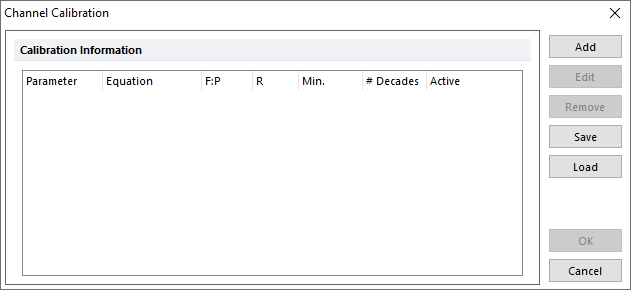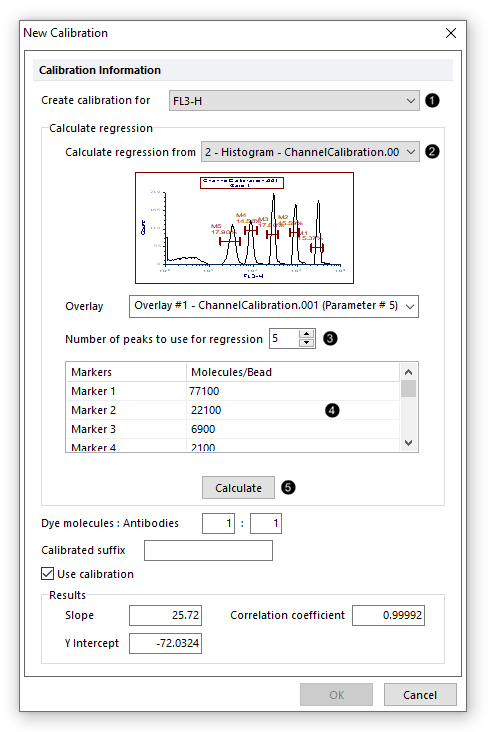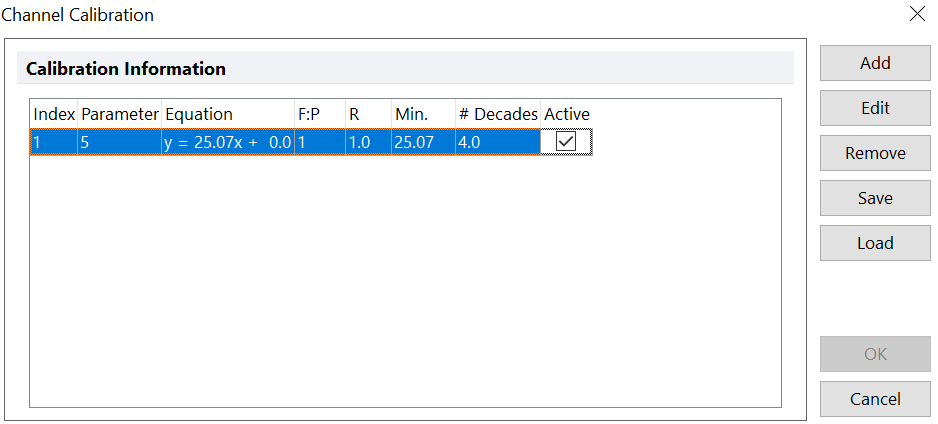Channel Calibration Tool Setup
In the course of this example, we will:
•Identify the variables needed for calibrating the channels.
•Set up the Channel Calibration tool using the beads and markers prepared in the previous section.
•Obtain the calibration information.
Before we can begin our setup, it is important to clarify a detail on how flow cytometry FCS data files are formatted. Typically, in an FCS file, the first parameter described is Forward scatter, followed by Side scatter, and then the fluorescent channels in order – FL1, FL2, FL3, etc. Some instruments embed the name of the parameter directly in the FCS file and you can see it in the Channel Calibration tool (see instructions below). In the file we will be using for this tutorial, that is not the case. Nevertheless, we know that "Parameter 5" corresponds to FL3, which is the channel we want to calibrate. In case you do not know which parameter corresponds to a fluorescent channel, you can view the FCS text header information by selecting the Data tab→Data Info group→View Header command. A dialog displaying the FCS data file header information will appear displaying all the parameter information in a grid.
We will proceed to set up the Channel Calibration tool.
1.Select the Tools tab→Calculate group→Channel Calibration command  .
.
The Channel Calibration dialog appears (Figure T25.6).

Figure T25.6 Channel Calibration Dialog
2.Click the Add button in the Channel Calibration dialog (Figure T23.6).
A New Calibration dialog now appears, similar to Figure T25.7.
3.Select FL3-H from the Create calibration for drop-down list (Figure T25.7, ![]() ).
).
4.Select the Histogram - ChannelCalibation.001 (FL3) with the calibration beads from the Calculate regression from drop-down list (Figure T25.7, ![]() ).
).
Note: If there are multiple overlays in your histogram, you can select which one to use in the Overlay option. In this case it is a simple histogram. Therefore, there are no other overlays and nothing has to be changed.
5.Enter "5" in the Number of peaks to use for regression field (Figure T25.7, ![]() ).
).
Typically, it is best to use all available peaks (except the blank one); however, if for some reason you want to omit one of the peaks, you may. Yet, you must use a minimum of three peaks to calculate a regression.
6.Enter the following respective fluorescence values for each peak, in the Molecules/Bead column beginning with Marker 1; 77100, 22100, 6900, 2100, 750 (Figure T25.7![]() ).
).
These values are provided by the manufacturer of the beads, usually quoted as MESF – Mean Equivalent of Soluble Fluorochrome. In this case, the reported MESF are for PE-Cy5 molecules.
If you specified fewer peaks than the number of markers in the histogram, for example, four peaks out of five markers, make sure you select the correct markers in the left column.
7.Click the Calculate button (Figure T25.7, ![]() ).
).

Figure T25.7 New Calibration Dialog
The New Calibration dialog and Results (Slope, Y intercept, and Correlation coefficient) should resemble Figure T25.7. FCS Express calculates the regression using the logarithmic values. The minimal detection threshold is the fluorescence obtained by setting the channel to "1" in the regression equation. The number of decades, or the dynamic range of the machine, is calculated as the inverse of the slope.
8.Click OK to close the New Calibration dialog.
The Channel Calibration dialog will resemble Figure T25.8. The channel calibration is now ready for use.
As you define calibrations for more parameters, they will all appear here. If the Active option is set, then that calibration set will be used in the layout in those plots that have the Use channel calibration on axis checked. You can only have one active calibration per parameter.

Figure T25.8 Updated Channel Calibration Dialog
Notes:
•Although we do not show it here, you also may edit existing calibrations for a particular parameter by selecting the parameter in the Channel Calibration list and pressing the Edit button.
•Calibration Information for a specific plot or layout may be reported directly in your layout by using the Channel Calibration Information Custom Token Formula reference.
9.Click OK to close the Channel Calibration dialog and return to the layout.
Next, we will demonstrate channel calibration.
